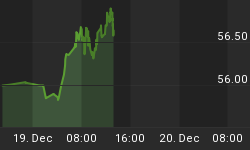The last major stock market 'recovery' in the U.S. started after the October 9, 2002 'bottom' and lasted 5-years and 2-days. Total gain: 103%. Unfortunately, by November 21, 2008 all of these 'gains' had been lost, thus rendering the 2002 'bottom' open to interpretation.
The latest major market 'recovery' started after the S&P hit an intraday low of 666.79 on March 8, 2009. Total gain using last weeks close: 50.5%. Given the sheer momentum behind this rally it is not unthinkable that the S&P 500 could rally by an additional 50.5% if the economic 'recovery' theme continues to take shape. However, it worth noting that even if an additional 50.5% in gains were to transpire the S&P 500 would still be down 4% from the 'top' registered on October 11, 2007...
Yes, it is helpful when using words like 'recovery' and 'bottom' to add some context. In the case of the current market rally - which is just over 5-months old - many cheerleaders and overly optimistic analysts seem to be missing the major point: terrific rallies are not uncommon following terrific sell-offs! What would be uncommon is if many investors actually timed the March 'bottom' perfectly.
The Recurring Theme of Cyclical Bulls is Eventual Destruction
There are, as always, isolated bargains to be found in equities, but 'the markets' themselves are anything but a bargain today. Instead stocks are pricing in a powerful economic/earnings recovery that is expected to materialize just as the U.S. consumer looks prepared to go down for the count. Can monetary and fiscal stimulus measures alone really do for the economy and markets what the unprecedented housing/credit bubbles did during the 2002-2007 'recovery'? There is also the risk that as the Fed eyes removing some of its emergency easing strategies and/or interest rates begin to rise (possibly because of decreased foreign demand for U.S. debt?), that an economic relapse will come to pass. Can economic stability in the U.S. really be sustained if interest rates jump sharply higher? Finally, there is the threat that policy makers will be unable to sustain their attack against the deflationary monsters still threatening to devour markets and asset prices across the globe. Thanks to QE measures and China's seemingly robust [bubble?] recovery, the deflation argument has recently lost some its backers. This could quickly change...
In short, it is the height of idiocy to take a 5-month snap-shot of market activity and contend that big new bull market is born, especially when the 5-year snapshot noted in the first paragraph turned out to be little more than an unsustainable cyclical bull fueled by unprecedented asset/credit bubbles. Given the potentially transient and/or unsustainable forces uniting to stabilize the U.S. economy, common sense leads to one conclusion: today's rally is a cyclical bull inside of a secular bear. To ignore this fact is to risk, a la Hussman, financial destruction.
"It would be nice to be able to take risk in a dangerous environment and get away with it. The fact is that you can get away with it, in hindsight, a good portion of the time. But on average, you'd get destroyed."















